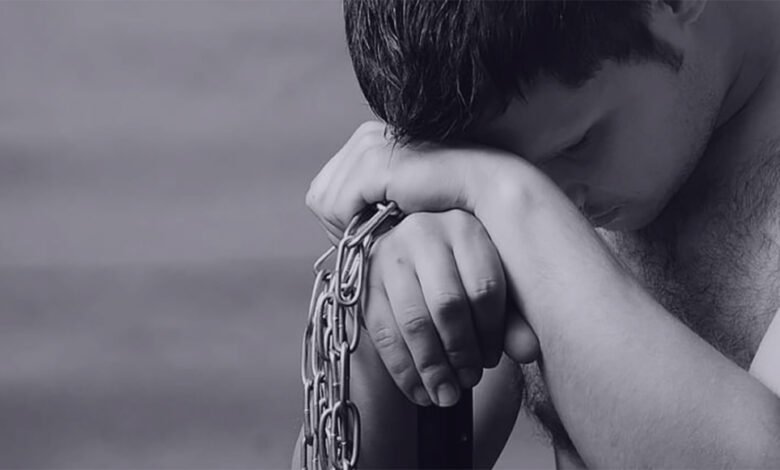Severe Depression and Pain – What Is Allodynia? – Bipolar Burble Blog

I know when my depression is severe because of the pain, because of the pain that is allodynia. Allodynia involves physical pain where the pain wouldn’t normally be present. And while I don’t need any additional reminders that my depression is severe, allodynia provides one all the same. Read on for information on physical pain and allodynia in depression, including how to treat this type of pain.
Physical Pain in Severe Depression
I’ve written before about physical pain in depression. If you have had severe major depression, this may not surprise you, but others never make the link between pain and depression. Rest assured, though, there is a link.
Put simply, people with severe depression experience more pain than others. This might be a worsening chronic pain condition, greater pain from injuries, or just exaggerated pain overall, but basically, those in severe psychic pain, thanks to depression, also have to deal with increased physical pain. It’s the worst of both worlds.
This literature review abstract indicates why recognizing and treating pain and depression together matters so much:
. . . depression and painful symptoms commonly occur together . . . The prevalences of pain in depressed cohorts and depression in pain cohorts are higher than when these conditions are individually examined. The presence of pain negatively affects the recognition and treatment of depression. When pain is moderate to severe, impairs function, and/or is refractory to treatment, it is associated with more depressive symptoms and worse depression outcomes (eg, lower quality of life, decreased work function, and increased health care utilization). Similarly, depression in patients with pain is associated with more pain complaints and greater impairment. Depression and pain share biological pathways and neurotransmitters, which has implications for the treatment of both concurrently . . .
What Is Allodynia?
Allodynia is a specific type of pain. According to the book StatPearls,
“Allodynia is defined as ‘pain due to a stimulus that does not normally provoke pain.’ An example would be a light feather touch (that should only produce sensation), causing pain.”
Allodynia is not an illness in and of itself, but rather, is a symptom of other illnesses.
Illnesses that commonly cause allodynia include:
- Fibromyalgia
- Trigeminal neuralgia
- Diabetes
- Migraine
You’ll note that no mental illness is currently associated with allodynia. However, pain, in general, is associated with depression; migraines are assisted with depression,l fibromyalgia is associated with depression; neuropathic pain is associated with depression. In my mind, it’s not such a gigantic leap to think that allodynia is also associated with depression; it’s just that no one has studied it yet.
Severe Depression and the Pain of Allodynia
When I’m seriously depressed, and I put my hands under temperate water to wash them, I experience a shock of pain. This is allodynia. In fact, every time it happens, the word “allodynia” crosses my mind. It is maybe preceded by “fuck.”
Other types of innocuous stimuli cause pain when I’m seriously depressed too, but the most obvious example is running water. I have no trouble washing my hand on an average-depression day, but when the depression gets out of control, there’s the allodynia pain. It’s like a flag that tells me just how screwed up my brain is on any given day. And to be honest, the pain plus the realization that allodynia is present and my depression is worse than ever makes me cry over the sink.
The one thing I can say is this: if this happens to you, you are not crazy. You are not alone. Pain from a non-painful stimulus is a real thing, and if it bothers you, it should be talked about and recognized by your doctor.
Treating Allodynia Pain in Depression
True, allodynia may not be recognized as being associated with depression, but the good news is this: some of the treatments for depression also are known to work on the pain of allodynia. Some antidepressants and anticonvulsants are known to treat this type of pain:
- Serotonin-norepinephrine reuptake inhibitor (SNRI) antidepressants like venlafaxine (Effexor) and duloxetine (Cymbalta) may help.
- Tricyclic antidepressants (TCAs) like amitriptyline (Elavil) may help.
- Anticonvulsants like gabapentin (Neurontin) may help.
There is no good evidence that non-steroidal anti-inflammatories (NSAIDs) like ibuprofen (Advil) and naproxen (Aleve) help with pain like allodynia, and opioids like oxycodone (OxyContin) seem to have very limited use.
Other treatments for allodynia pain include:
- Topical agents like lidocaine and botulinum toxin A (BOTOX) (for peripheral allodynia)
- Therapies that teach pain-related coping skills
- Cognitive behavioral therapy (CBT) that addresses comorbid psychological issues that often accompany pain
- Physiotherapy
In my opinion, the real treatment for allodynia is the treatment of the underlying depression to the point of remission, but we all know that can take some time, so there may need to be some of the above in the meantime.
Have You Experienced Allodynia in Depression?
Let me know in the comments if allodynia pain is something you face. Talking more about it could move understanding forward.
Other Posts You Might Enjoy
Source link
#Severe #Depression #Pain #Allodynia #Bipolar #Burble #Blog

